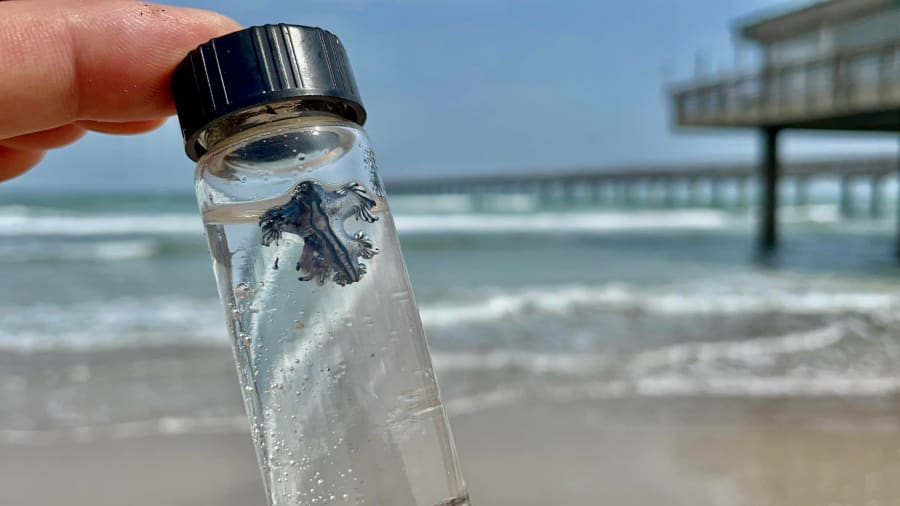PORT ARANSAS, Texas – There are dragons at the beach in Texas, but they are not the fire-breathing kind you’re likely familiar with.
Blue dragons have been spotted for a second time in two years along Texas beaches but it’s still a rare find, according to University of Texas Marine Science Institute Reserve Director Jace Tunnell.
“Before the discovery of the blue dragons in 2020 I had never even seen or heard of one,” Tunnell said.
Blue glaucus, known more commonly as a blue dragon, is a type of nudibranch or sea slug.
Officials with the Mission-Aransas Reserve posted photos of the dragons to Facebook on Wednesday.
“We’ve got a number of cool finds washing up this week. We recorded 4 blue dragons (species of sea slug) in a 100 meter stretch of beach just north of Bob Hall Pier,” the Facebook post states.
Tunnell told KSAT he was out on the beach with some high school students who were there to do nurdle patrol surveys.
“I spotted one about the size of a thumbnail and knew immediately what it was,” Tunnell said. “I counted four of them in like 100 meters.”
Tunnell said he recognized the sea slugs after the May 2020 reports of blue dragons on the beach at Padre Island National Seashore.
PINS park officials also told KSAT at the time that the sea slugs were a rare find.

“Blue dragons are a predator of the Portuguese man-of-war. After eating, they move the stinging cells from the man-of-war to the end of their ‘fingers.’ Because they concentrate the stinging cells together, their sting can be more painful than a man-of-war’s,” PINS officials said after the initial discovery in 2020.
A spokesperson for PINS shared a clipping of a past edition of the Padre Post Newspaper at the time that noted blue dragons get their vivid blue color from food sources like the Portuguese man-of-war and blue button jellyfish.
The Mission-Aransas Reserve Facebook post notes that there have also been a lot of blue buttons and storm snails washing up on the beach, which aligns with the blue dragon sightings.
Tunnell also confirmed that several Portuguese men-of-war were found near where the blue dragons were spotted.
Blue buttons are commonly thought to be jellyfish but they’re actually a marine animal known as a Porpita Porpita.
Even though the dragons look pretty, if you spot one along the beach — don’t touch it. The sea slugs aren’t affected by the stinging cells in the food they’re eating.
“They actually concentrate the nematocysts in cnidosacs (the black tips on the ‘fringes’) and store them for protection against larger predators,” according to the Padre Post.



